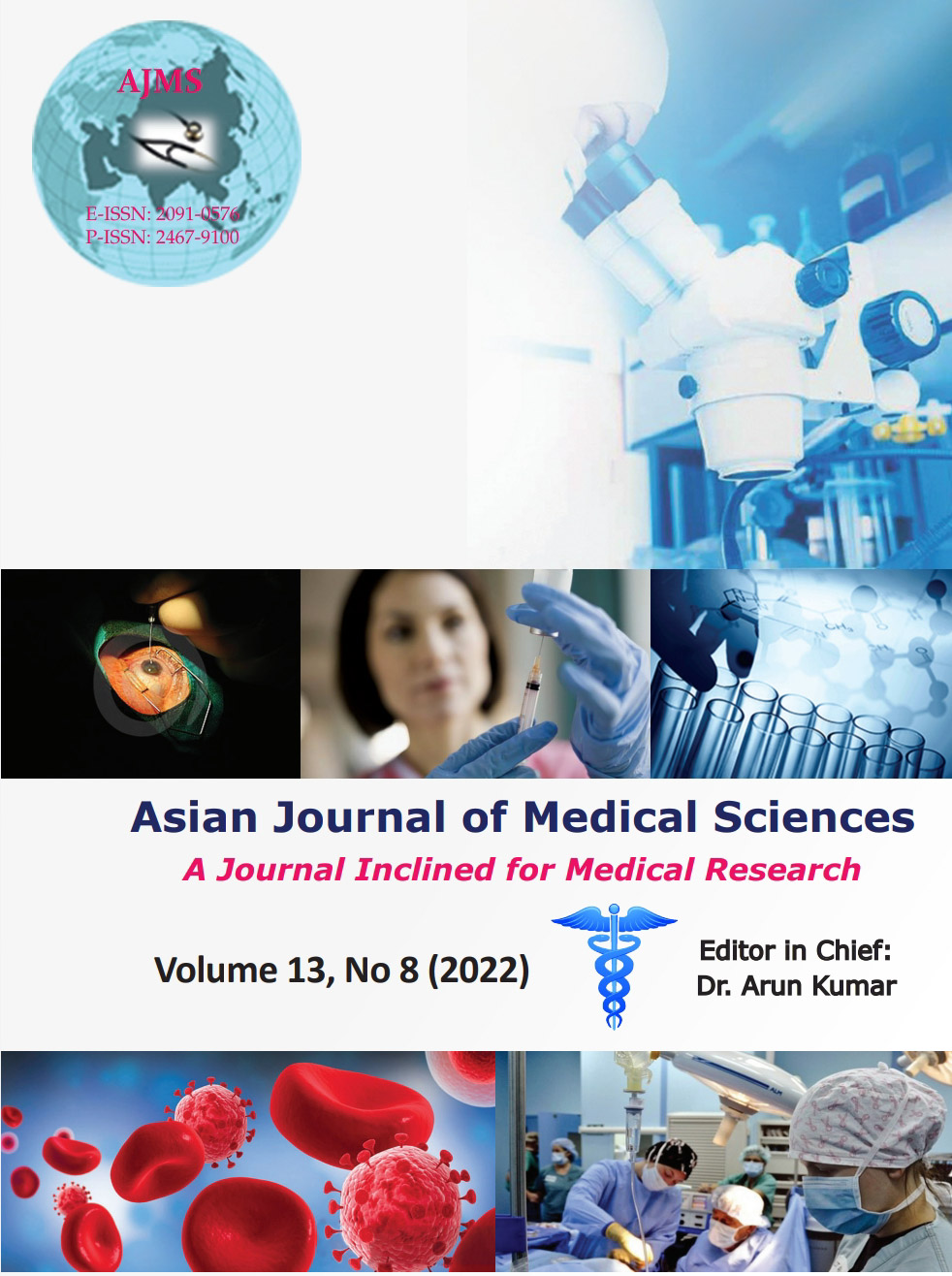Influence of epidemiological factors on asthma phenotypes among asthma patients attending a tertiary care center – A cross-sectional study
Keywords:
Asthma; Biomarkers; Phenotypes; Respiratory tract infections; Tobacco smokingAbstract
Background: Asthma is a heterogeneous disease presenting with various phenotypes usually characterized by chronic airway inflammation.
Aims and Objectives: The aim of the study was to identify epidemiology of bronchial asthma phenotypes in patients attending to
tertiary care center.
Materials and Methods: This was a descriptive cross-sectional study involving 69 patients who are suspected to have asthma according to the Global Initiative for Asthma guidelines. The data of each patient were collected on a proforma specially designed for this study on demographic data, socioeconomic status, body mass index, exposure to environmental factors, and other history-related questions. Sputum cytology and absolute eosinophil count were also examined using coGuide and P<0.05 was considered significant. Asthma phenotypes were the primary outcome and association of environmental factors with asthma phenotypes was the secondary outcome.
Results: Out of 69, majority 26 (37.7%) were aged 31–40 years; 35 (50.7%) males and 34 (49.3%) were females. Fifty-eight (84.1%) were illiterate and 46 (66.7%) belonged to low class. Sputum cytology report showed that majority of them, 66.7%, had eosinophilia. The majority, 48 (69.6%), of the participants were triggered by weather and 55.1% had a history of respiratory tract infections. Thirty-three (47.83%) participants had obesity associate asthma, 34 (49.28%) had allergic asthma, and 20 (28.99%) had smoking-related asthma phenotypes. The difference in the proportion of few environment factor was significant for allergic and smoking-related asthma (P>0.005).
Conclusion: The factors associated with the asthma phenotypes will help us further in anticipating the clinical course and better management of the specific phenotypes.
Downloads
Downloads
Published
How to Cite
Issue
Section
License
Copyright (c) 2022 Asian Journal of Medical Sciences

This work is licensed under a Creative Commons Attribution-NonCommercial 4.0 International License.
Authors who publish with this journal agree to the following terms:
- The journal holds copyright and publishes the work under a Creative Commons CC-BY-NC license that permits use, distribution and reprduction in any medium, provided the original work is properly cited and is not used for commercial purposes. The journal should be recognised as the original publisher of this work.
- Authors are able to enter into separate, additional contractual arrangements for the non-exclusive distribution of the journal's published version of the work (e.g., post it to an institutional repository or publish it in a book), with an acknowledgement of its initial publication in this journal.
- Authors are permitted and encouraged to post their work online (e.g., in institutional repositories or on their website) prior to and during the submission process, as it can lead to productive exchanges, as well as earlier and greater citation of published work (See The Effect of Open Access).




